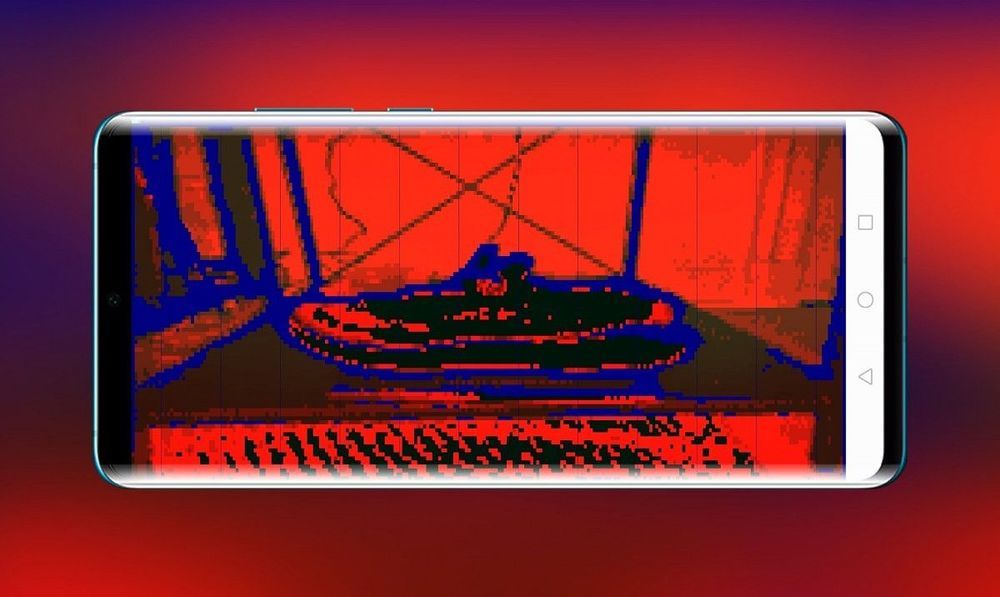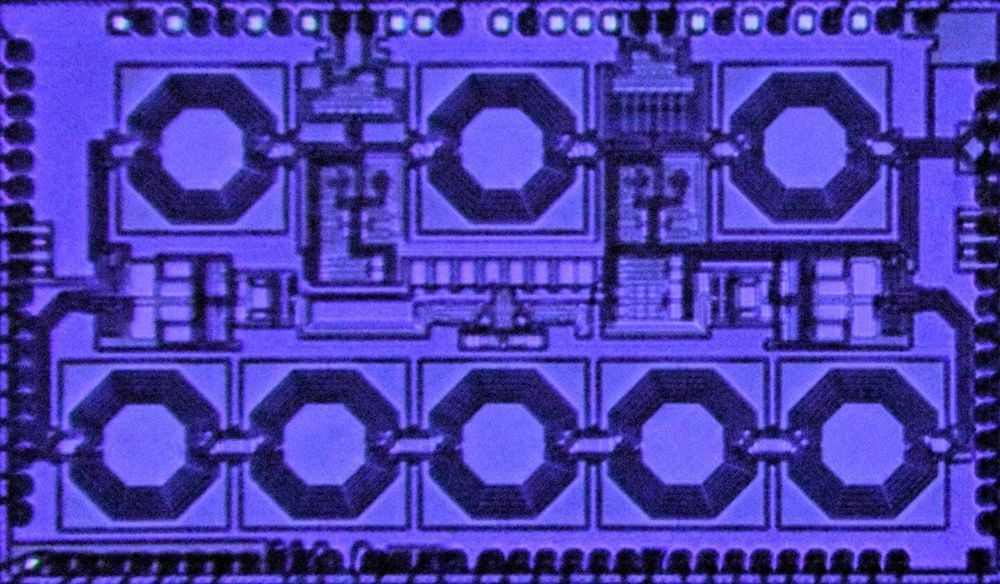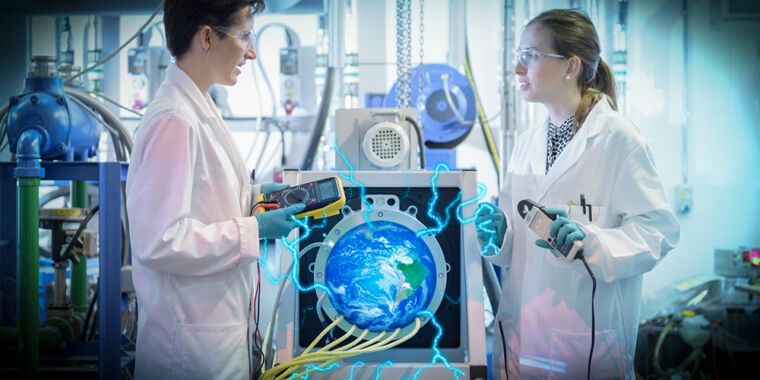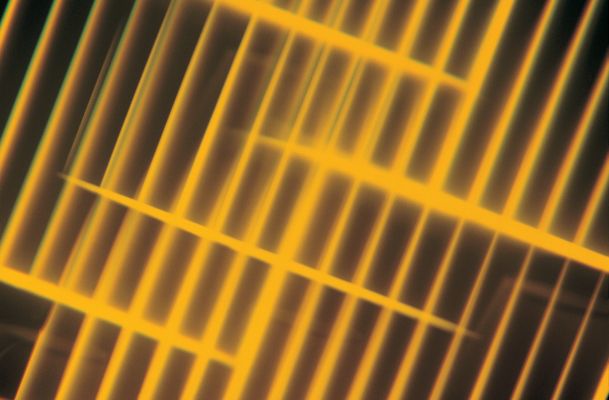Turn the ToF camera on the Samsung Galaxy S20+, Galaxy Note 10+, and Galaxy S10 5G to a night vision that lets you see in the dark with this app.



Waves, whether they are light waves, sound waves, or any other kind, travel in the same manner in forward and reverse directions—this is known as the principle of reciprocity. If we could route waves in one direction only—breaking reciprocity—we could transform a number of applications important in our daily lives. Breaking reciprocity would allow us to build novel “one-way” components such as circulators and isolators that enable two-way communication, which could double the data capacity of today’s wireless networks. These components are essential to quantum computers, where one wants to read a qubit without disturbing it. They are also critical to radar systems, whether in self-driving cars or those used by the military.
A team led by Harish Krishnaswamy, professor of electrical engineering, is the first to build a high-performance non-reciprocal device on a compact chip with a performance 25 times better than previous work. Power handling is one of the most important metrics for these circulators and Krishnaswamy’s new chip can handle several watts of power, enough for cellphone transmitters that put out a watt or so of power. The new chip was the leading performer in a DARPA SPAR (Signal Processing at RF) program to miniaturize these devices and improve performance metrics. Krishnaswamy’s group was the only one to integrate these non-reciprocal devices on a compact chip and also demonstrate performance metrics that were orders of magnitude superior to prior work. The study was presented in a paper at the IEEE International Solid-State Circuits Conference in February 2020, and published May 4, 2020, in Nature Electronics.
“For these circulators to be used in practical applications, they need to be able to handle watts of power without breaking a sweat,” says Krishnaswamy, whose research focuses on developing integrated electronic technologies for new high-frequency wireless applications. “Our earlier work performed at a rate 25 times lower than this new one—our 2017 device was an exciting scientific curiosity but it was not ready for prime time. Now we’ve figured out how to build these one-way devices in a compact chip, thus enabling them to become small, low cost, and widespread. This will transform all kinds of electronic applications, from VR headsets to 5G cellular networks to quantum computers.”

In 2010, a lithium-ion battery pack with 1 kWh of capacity—enough to power an electric car for three or four miles—cost more than $1,000. By 2019, the figure had fallen to $156, according to data compiled by BloombergNEF. That’s a massive drop, and experts expect continued—though perhaps not as rapid—progress in the coming decade. Several forecasters project the average cost of a kilowatt-hour of lithium-ion battery capacity to fall below $100 by the mid-2020s.
That’s the result of a virtuous circle where better, cheaper batteries expand the market, which in turn drives investments that produce further improvements in cost and performance. The trend is hugely significant because cheap batteries will be essential to shifting the world economy away from carbon-intensive energy sources like coal and gasoline.
Batteries and electric motors have emerged as the most promising technology for replacing cars powered by internal combustion engines. The high cost of batteries has historically made electric cars much more expensive than conventional cars. But once battery packs get cheap enough—again, experts estimate around $100 per kWh for non-luxury vehicles—electric cars should actually become cheaper than equivalent gas-powered cars. The cost advantage will be even bigger once you factor in the low cost of charging an electric car, so we can expect falling battery costs to accelerate the adoption of electric vehicles.

The owner of a cocktail bar in the UK has turned to physics in an attempt to force his customers to actually talk to other instead of just staring at social media all night.
Steve Tyler, who owns the Gin Tub in East Sussex, has built his very own Faraday cage around the establishment to block mobile phone signals from entering the building.
It’s a pretty ingenious (but controversial) move that involves installing metal mesh in the walls and ceiling of the bar to essentially filter out electromagnetic signals before they enter the building.

The 5G revolution has begun, and the first lines of phones that can access the next generation of wireless speeds have already hit the shelves. Researchers at The University of Texas at Austin and the University of Lille in France have built a new component that will more efficiently allow access to the highest 5G frequencies in a way that increases devices’ battery life and speeds up how quickly we can do things like stream high-definition media.
Smartphones are loaded with switches that perform a number of duties. One major task is jumping between networks and spectrum frequencies: 4G, Wi-Fi, LTE, Bluetooth, etc. The current radio-frequency (RF) switches that perform this task are always running, consuming precious processing power and battery life.
“The switch we have developed is more than 50 times more energy efficient compared to what is used today,” said Deji Akinwande, a professor in the Cockrell School of Engineering’s Department of Electrical and Computer Engineering who led the research. “It can transmit an HDTV stream at a 100 gigahertz frequency, and that is unheard of in broadband switch technology.”

Samsung has launched a new secure element (SE) chip to protect private and sensitive data on mobile devices, the company said on Tuesday.
The chip, dubbed S3FV9RR, will be offered as a standalone turnkey with security software, Samsung said.
Common Criteria, which certifies the security level of IT products from EAL0 to EAL7 with seven being the most secure, gave the security chip a Common Criteria Evaluation Assurance Level (CC EAL) 6+ certification.


A renowned iPhone hacking team has released a new “jailbreak” tool that unlocks every iPhone, even the most recent models running the latest iOS 13.5.
For as long as Apple has kept up its “walled garden” approach to iPhones by only allowing apps and customizations that it approves, hackers have tried to break free from what they call the “jail,” hence the name “jailbreak.” Hackers do this by finding a previously undisclosed vulnerability in iOS that break through some of the many restrictions that Apple puts in place to prevent access to the underlying software. Apple says it does this for security. But jailbreakers say breaking through those restrictions allows them to customize their iPhones more than they would otherwise, in a way that most Android users are already accustomed to.
The jailbreak, released by the unc0ver team, supports all iPhones that run iOS 11 and above, including up to iOS 13.5, which Apple released this week.

Few recognize the vast implications of materials science.
To build today’s smartphone in the 1980s, it would cost about $110 million, require nearly 200 kilowatts of energy (compared to 2kW per year today), and the device would be 14 meters tall, according to Applied Materials CTO Omkaram Nalamasu.
That’s the power of materials advances. Materials science has democratized smartphones, bringing the technology to the pockets of over 3.5 billion people. But far beyond devices and circuitry, materials science stands at the center of innumerable breakthroughs across energy, future cities, transit, and medicine. And at the forefront of Covid-19, materials scientists are forging ahead with biomaterials, nanotechnology, and other materials research to accelerate a solution.